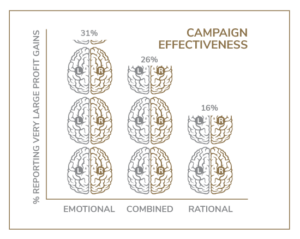One of the most critical aspects of any brand, marketing or sales success is strong emotive and educated communication.
The key to any successful integrated marketing campaign is the way we can stimulate emotion by communication.
By skillfully planning your brand message and understanding your customers, your objectives can be met and you can build a platform to grow your business.
It is the fine detail and core belief system that may be a small part of your overall marketing communication collateral — but it is key to your success.
For us to effectively build your brand belief system, we must understand fully the who, what and why — who you are, what you do and why customers should interact with your business. Preparation is key here, and together we will help gather information, knowledge and experience to fully understand your brand objectives.
We then collate the information into the following sectors:
INTEREST
What are the core components that will stimulate and engage our customers? What detail or information can we use to help educate and attract a customers attention?
FASCINATION
In a world of frustration and change, let your customer know why they should be engaging with your brand. Show them how you can make the difference that they need. Use your strengths as a magnet of attraction and a way of cementing a positive engagement.
SENSITIVITY
Don’t oversell — yes, telling without selling! Articulate communication empowers a customer to make the purchasing decision on their own merit. This is key in today’s current, ever-changing market. We use all platforms at hand to show the genuine difference it will make to them. We understand that marketing, communication and sales in general are all about emotion, and are sensitive to the fact that no one likes to be told what to do. If you believe in your brand, they will too.
KNOWLEDGE
So we have created the interest and captured the audience. We have fascinated them with the tools and the products at our resource.
We have been sensitive to the fact that the decision is up to our customers to make, and that respect breeds trust, trust breeds respect.
We then have to ensure that our knowledge and expertise is there to deliver the promise.
EMOTIONAL INFLUENCE
“Functional magnetic resonance imaging (fMRI) shows that when evaluating brands, consumers primarily use emotions (personal feelings and experiences), rather than information (brand attributes, features, and facts).
Advertising research reveals that the consumer’s emotional response to an ad has far greater influence on their reported intent to buy a product than does the ad’s content — by a factor of 3-to-1 for television commercials and 2-to-1 for print ads.
Research conducted by the Advertising Research Foundation concluded that “likeability” is the measure most predictive of whether an advertisement will increase a brand’s sales.
Studies show that positive emotions toward a brand have far greater influence on consumer loyalty than trust and other judgments, which are based on a brand’s attributes.
Rich and powerful mental representations of a brand include its personality. Research reveals that consumers perceive the same type of personality characteristics in brands as they do in other people. And just like with people, they are attracted more to some personality types than others — attractions which are emotion-based, not rational. Brand personality is communicated by marketers through packaging, visual imagery, and the types of words used to describe the brand.”
— Peter Noel Murray Ph.D. Psychology Today
We have all used the principles of the SWOT (Strength, Weakness, Opportunity, Threat) analysis. Classically yes, this is invaluable in the process of collecting your internal and business thoughts. However this analysis is how we believe we at Still Creek Communications help you define and deliver effective communications.
